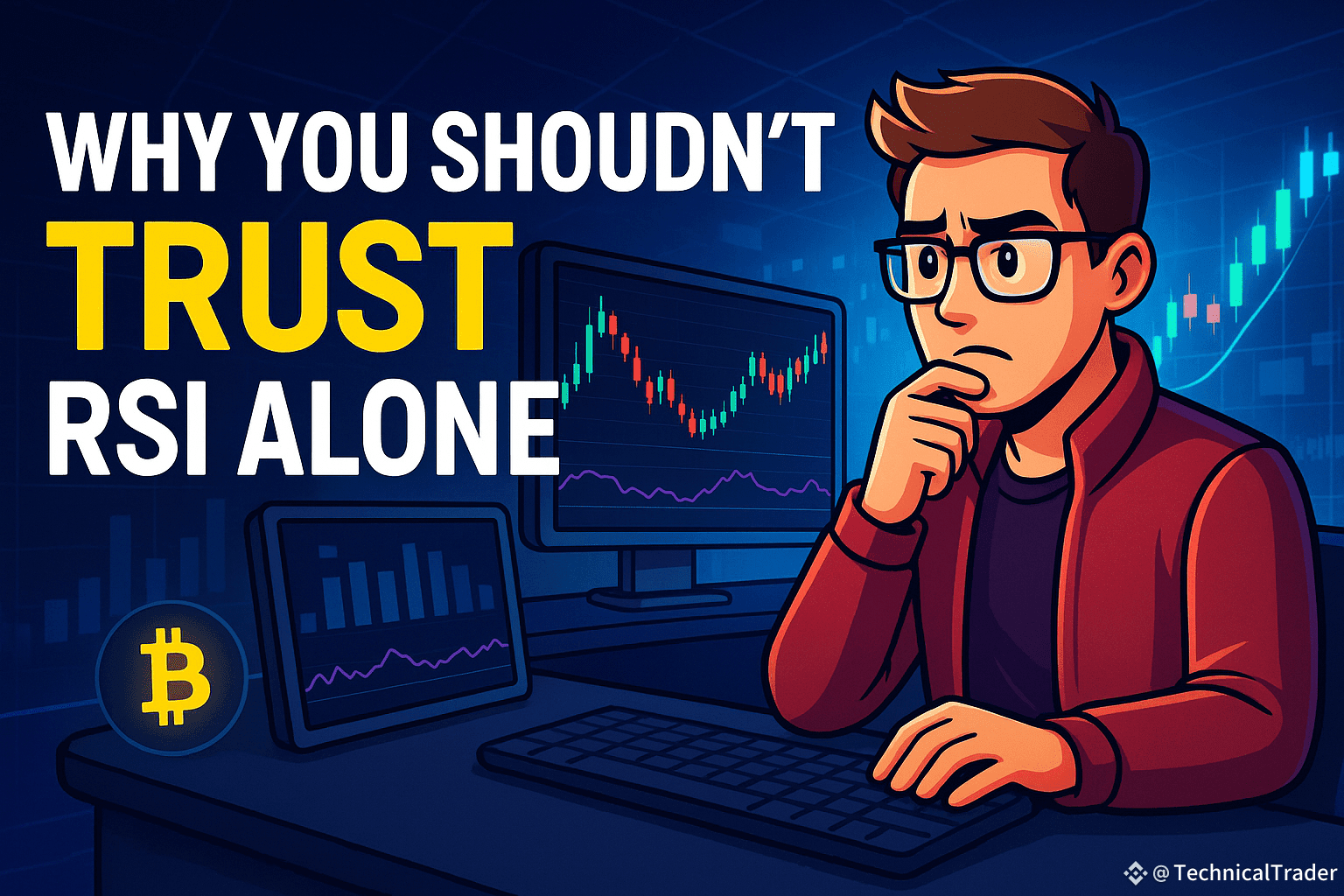The Relative Strength Index (RSI) is a common tool many traders use to check if a coin is overbought or oversold. On paper, it sounds great — if RSI is above 70, maybe the coin is too expensive. If it's below 30, maybe it’s cheap. But in real crypto trading, things aren't that simple.
Here’s why you shouldn’t rely on RSI alone:
1. Crypto is too volatile
Prices in crypto move fast, often for reasons that have nothing to do with RSI. News, whale movements, or sudden hype can send a coin flying up even if RSI says it's "overbought."
2. RSI gives false signals
Sometimes RSI goes below 30, making you think it's a good time to buy. But then the price keeps dropping. Same with selling — RSI might be high, but the price keeps rising. It’s not always accurate.
3. No context
RSI doesn’t know the big picture. It only looks at price movements. It doesn’t consider market trends, support/resistance, or news. That makes it risky to follow it blindly.
4. Better with other tools
RSI works best with other indicators. Use it with trend lines, volume, MACD, or news analysis. This gives you a fuller view of the market and helps you avoid bad trades.
Final Thought
RSI is helpful, but it’s not magic. Don’t trust it on its own. Use it as one part of your trading plan — not the whole plan. Always look at the bigger picture before making a move.
if you find this Article Helpful then like this 👍
Follow for more content 🙂

